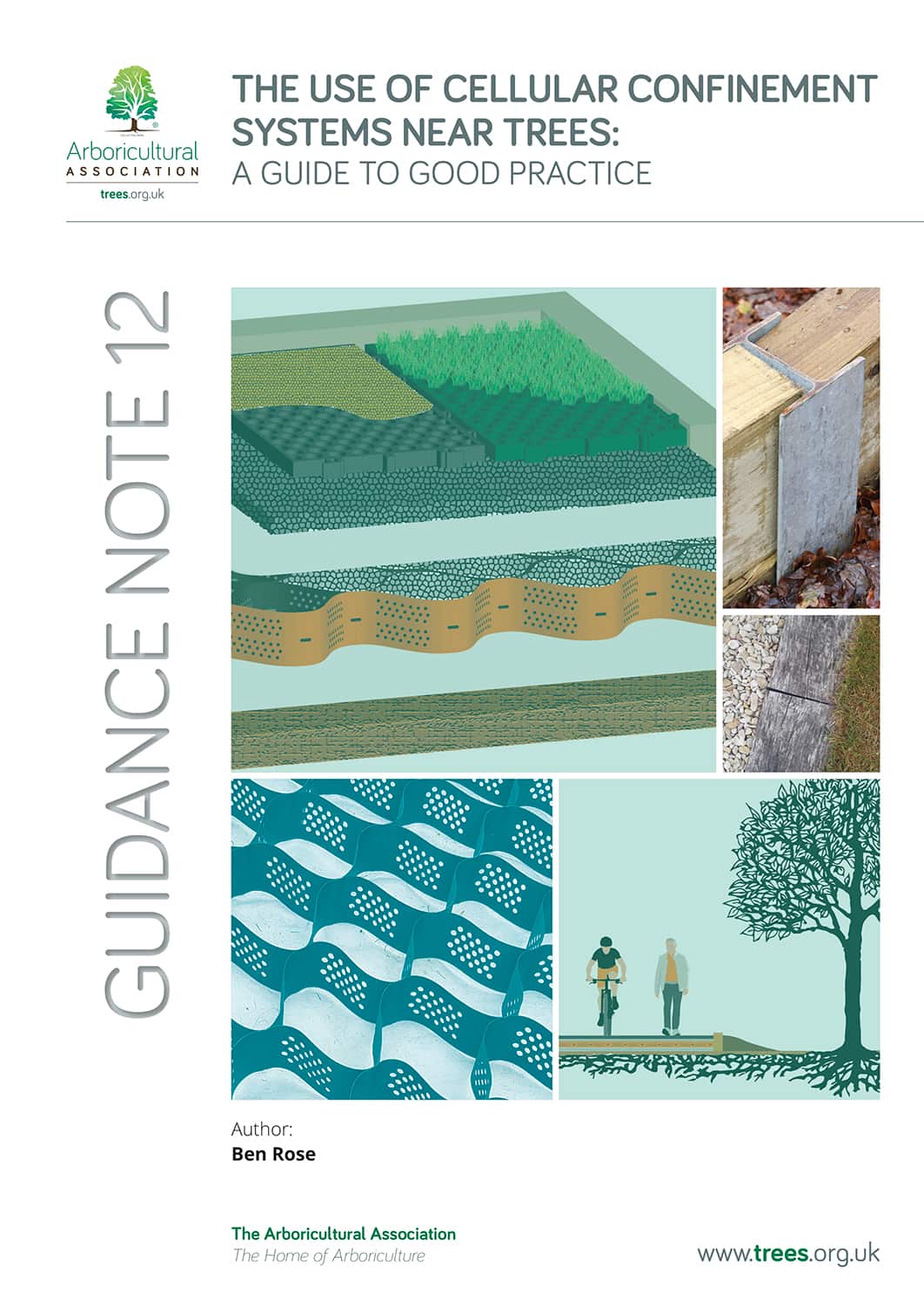New guide to use of cellular confinement systems near trees

The Association’s Guidance Note 12: The Use of Cellular Confinement Systems near Trees is now available to download here.
Tree roots can be damaged by soil stripping, and the volume of viable soil available to a tree can be reduced if soil is compacted or sealed from above. For these reasons, the introduction of new hard surfacing within root protection areas should only be specified when other alternatives are not feasible. However, with increasing pressure to open up land for development it is now common for the installation of driveways, car parks, cycle paths and footpaths to be required within tree root protection areas.
In such cases, where the adjacent trees are to be retained, the soil needs to be protected in some way. When no-dig surfacing is required near trees, a cellular confinement system sub-base is currently the most used approach, but there are alternative construction techniques which may sometimes provide a better solution, such as piled rafts using conventional or screw piles, or the use of stone-filled wire gabions.
Above-ground cellular confinement systems have been employed to install surfacing near trees in the UK for over 20 years, but their use is not always a simple matter and the limitations of the approach are often misunderstood. Until now the only guidance on this subject available for arboricultural professionals was Arboricultural Practice Note 12, which was a short guide published in 2007. The new good practice guide – Arboricultural Association Guidance Note 12 – describes in more detail how cellular confinement systems can be used for ground protection near trees and draws on industry experience to provide practical advice on how to specify and install new hard surfacing above tree root zones.
It aims to inform specifiers and contractors by discussing the environmental factors that need to be considered and by explaining the engineering principles that effective cellular confinement system designs employ. However, attempts have been made to avoid the content being overly prescriptive because each site will present unique circumstances that vary with the trees present, the local soil conditions, the scale of the construction project, and the intended use.
The document stipulates that high-density polyethylene (HDPE) geocells should be used when installing surfacing near trees rather than geocells made of flexible geotextiles. Suitable infill materials are described and there is guidance on the appropriate equipment to use and methods for installation. Another key recommendation is that the final top dressing of a cellular confinement system needs to be permeable.
The document makes it clear that every installation will need to be directed by a project-specific arboricultural method statement, and it strongly recommends that ground preparation works are carried out under arboricultural supervision.
The project has taken three years to complete and included wide-ranging consultation with manufacturers and arboricultural professionals. It is pertinent that the Arboricultural Association is publishing this guidance document now at a time when there is a push for towns and cities to expand their cycle path networks. It is also hoped that this guide will prove to be a useful tool to help arboriculturists detail tree protection measures for years to come.
Figure 1 from the new Guidance Note 12: The basic approach to using cellular confinement systems for ground protection near trees. (image courtesy of Core LP)
